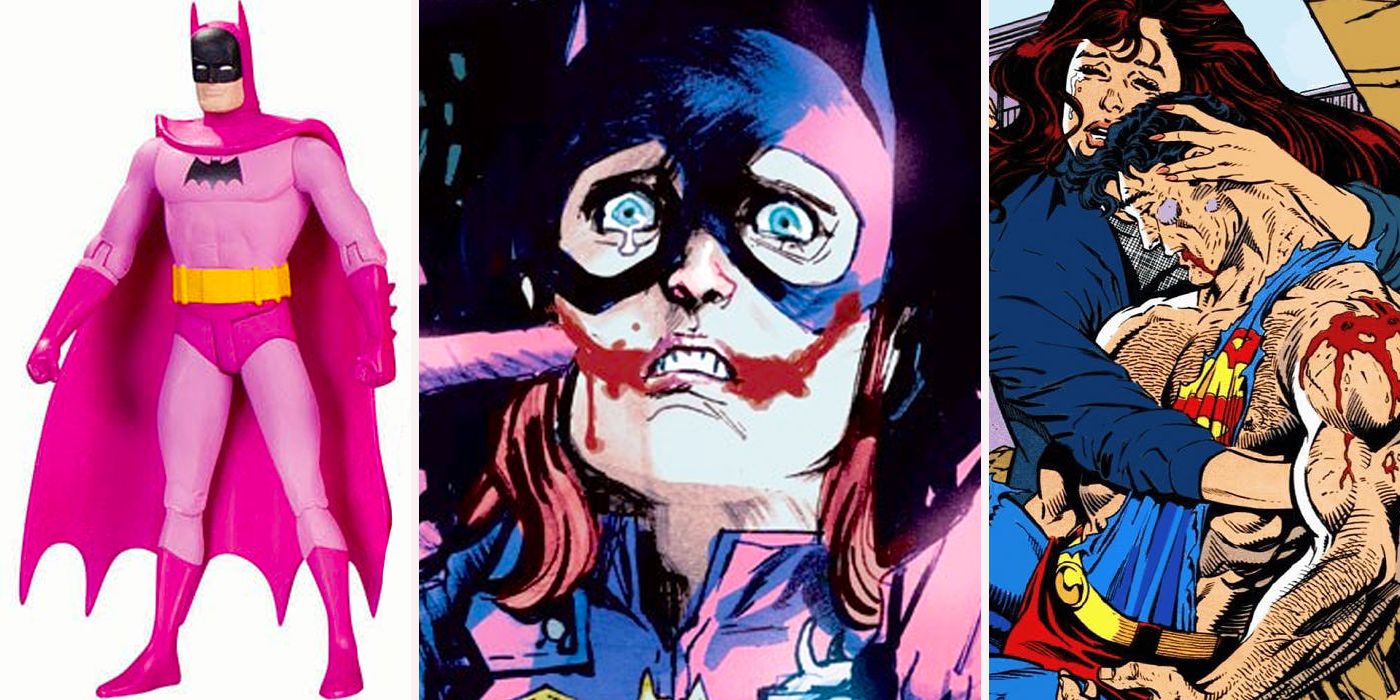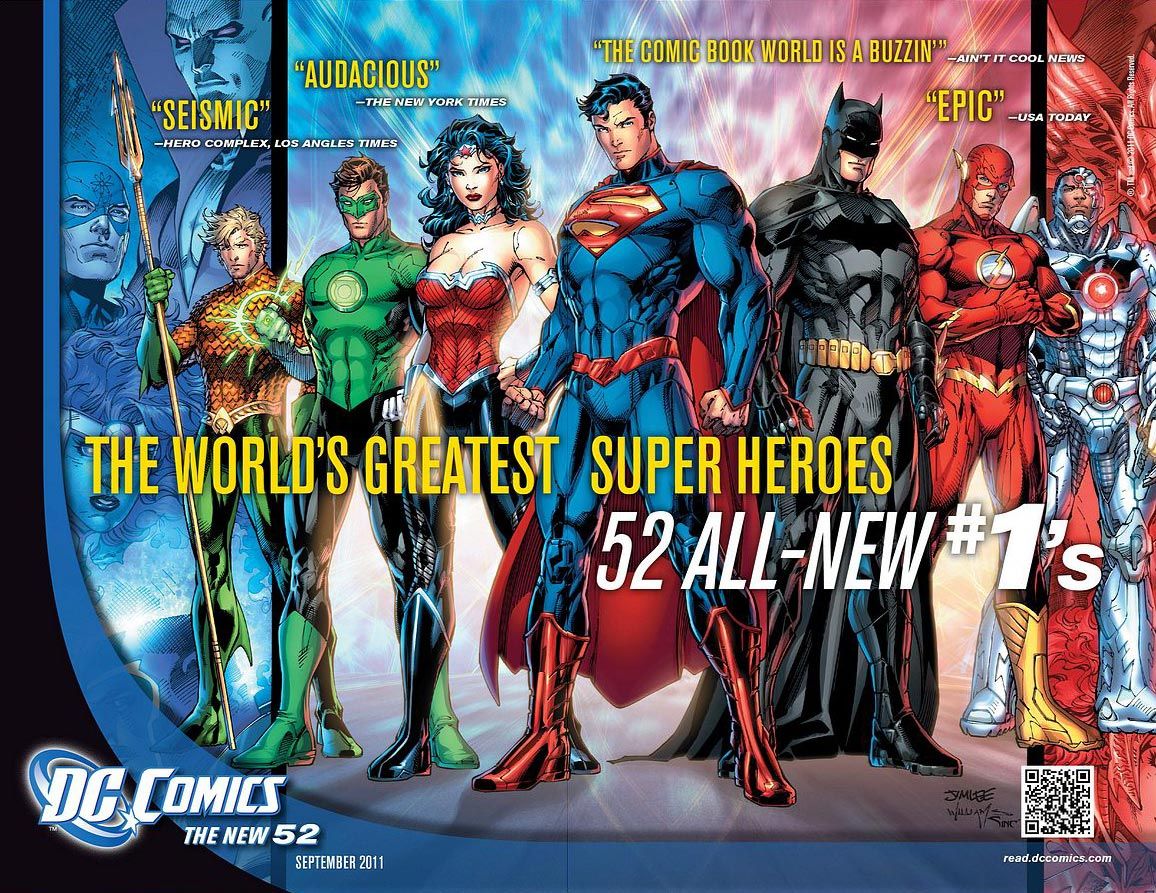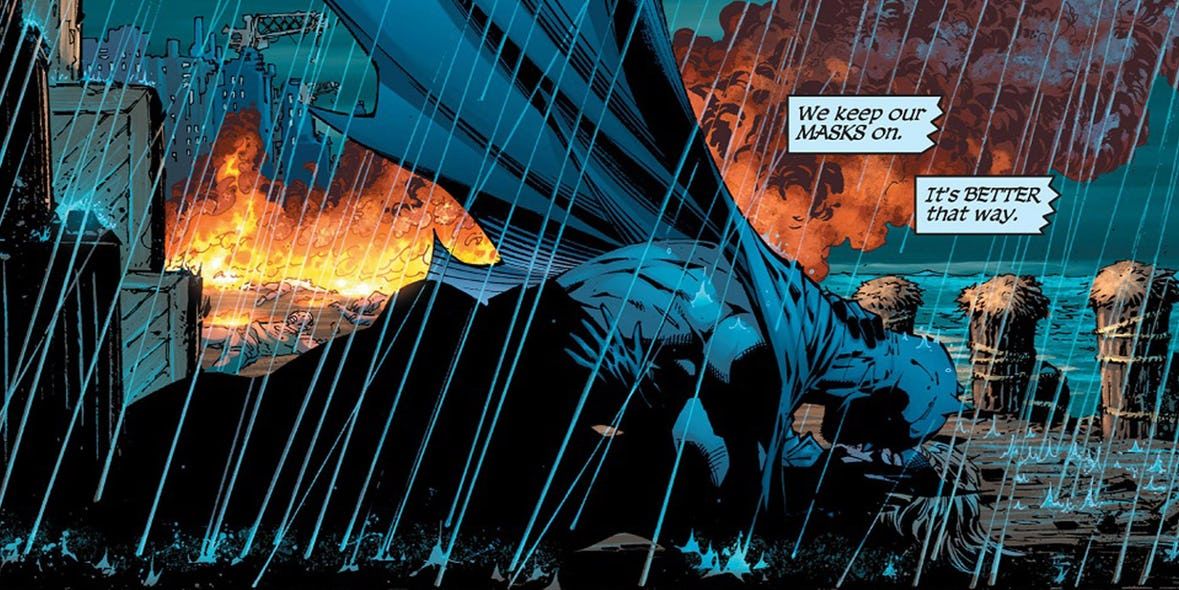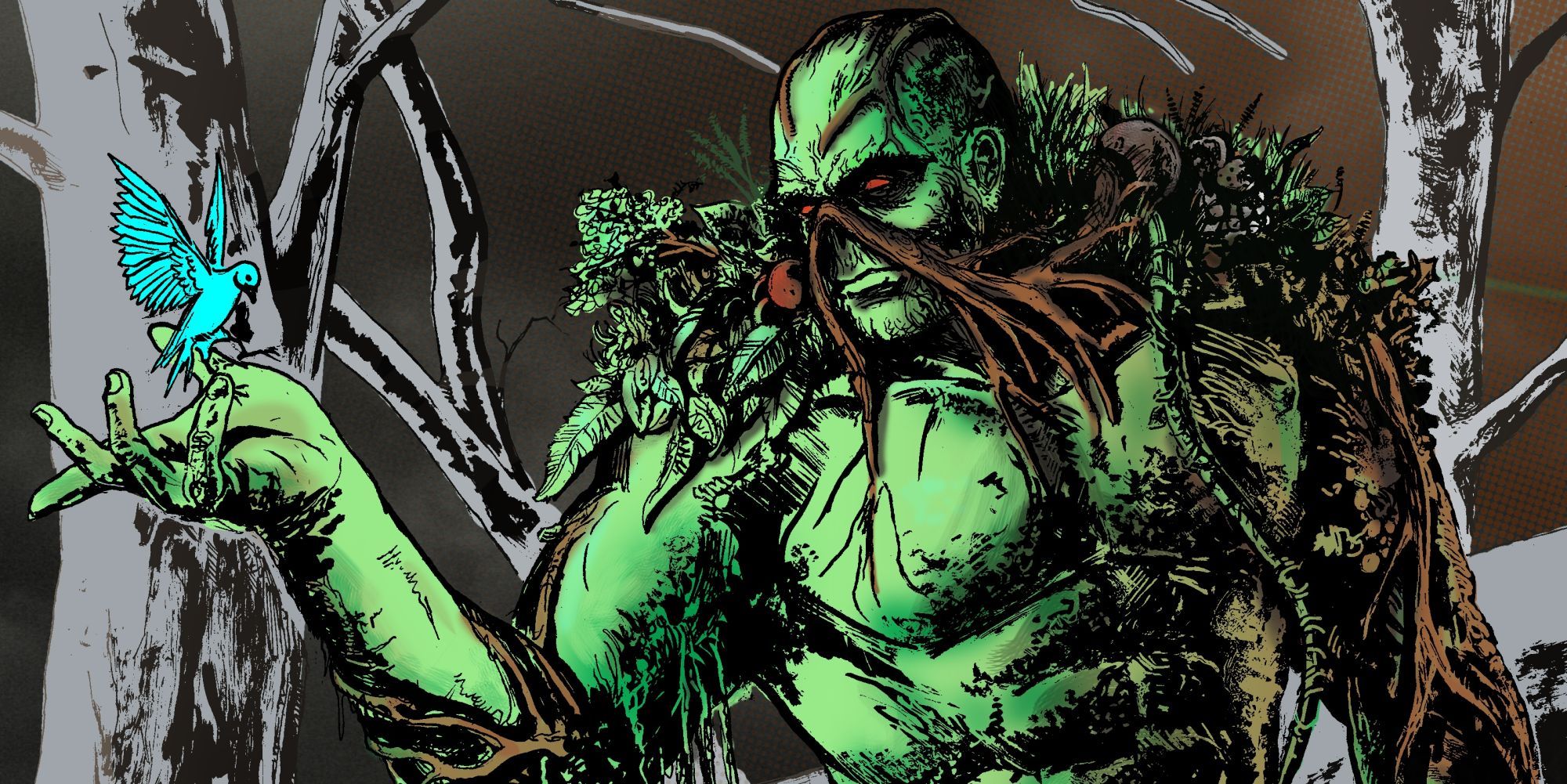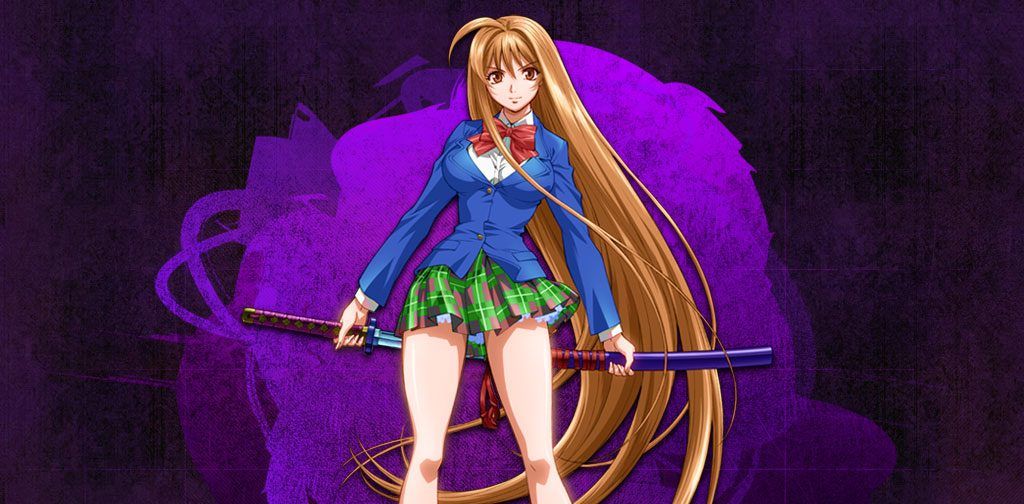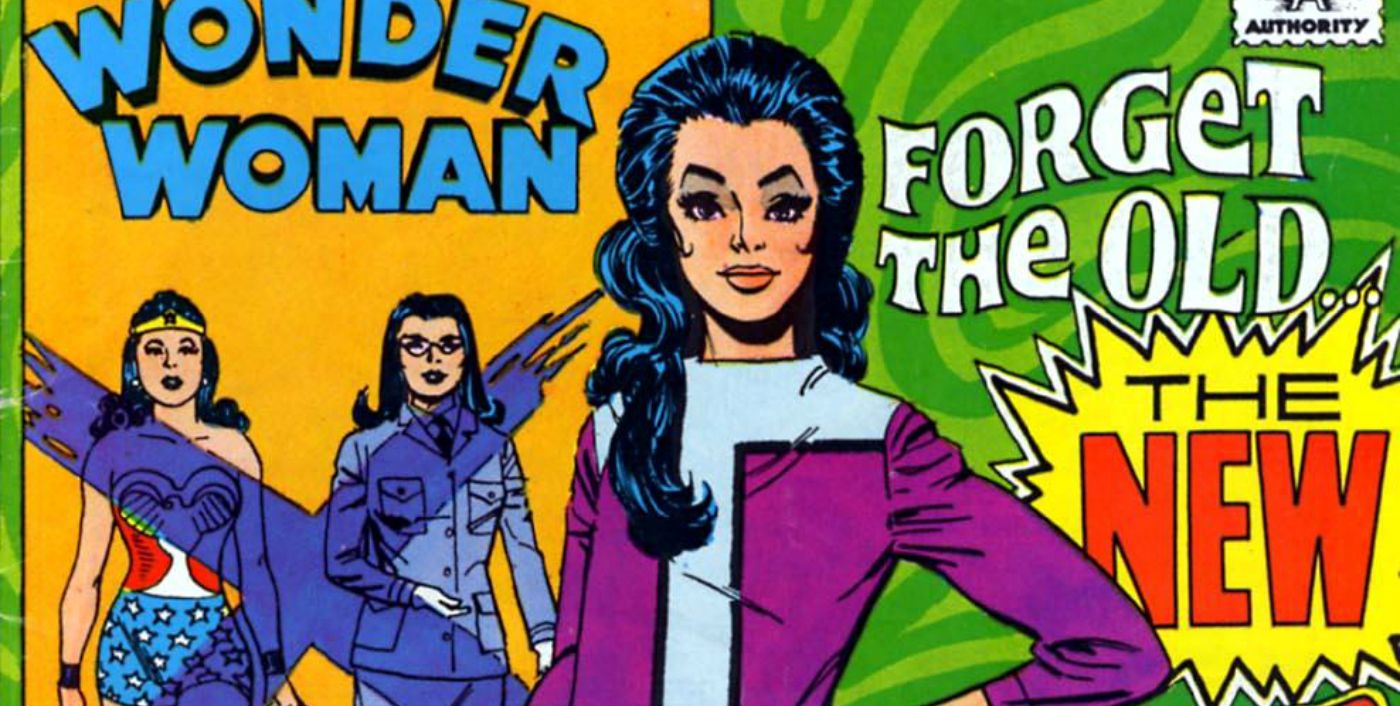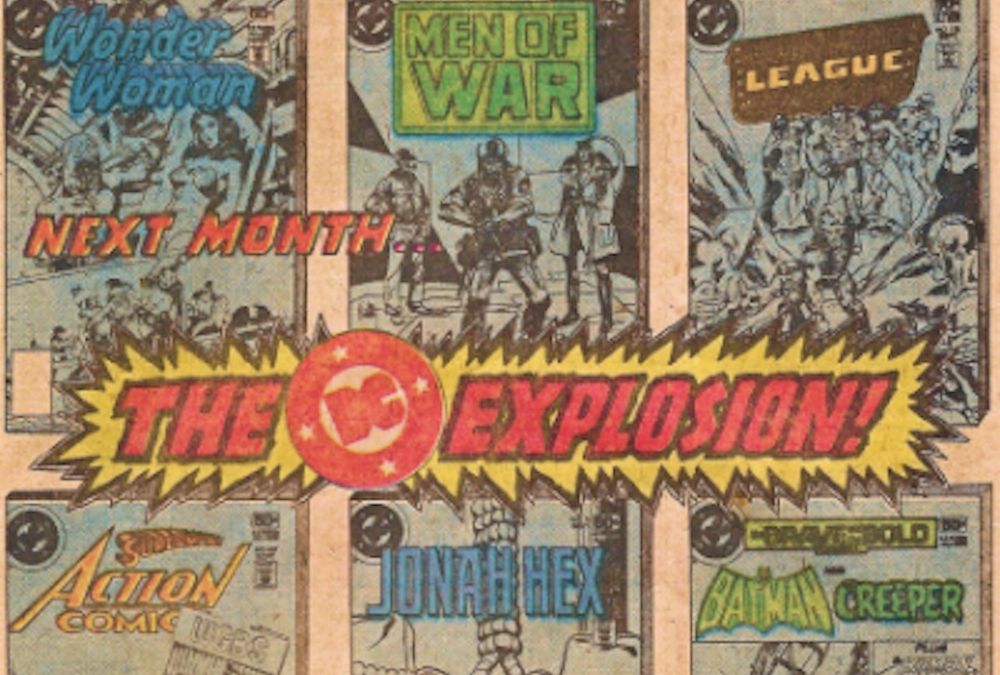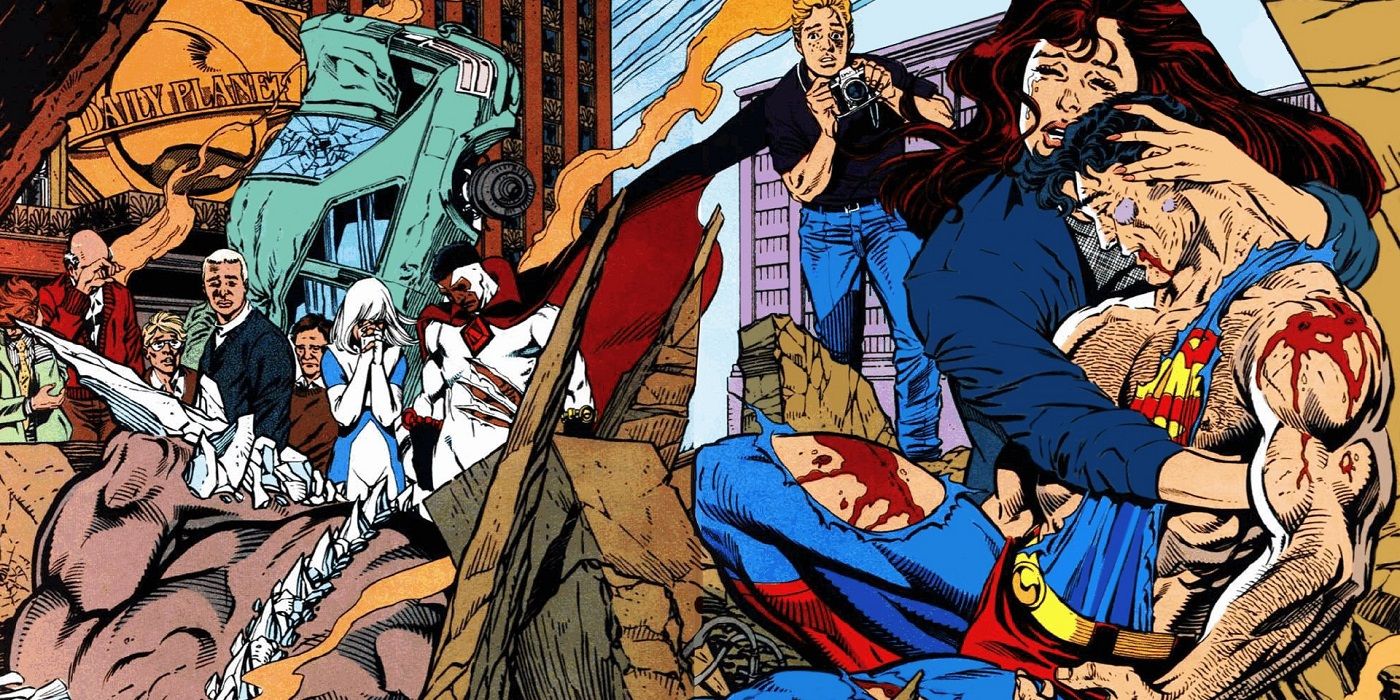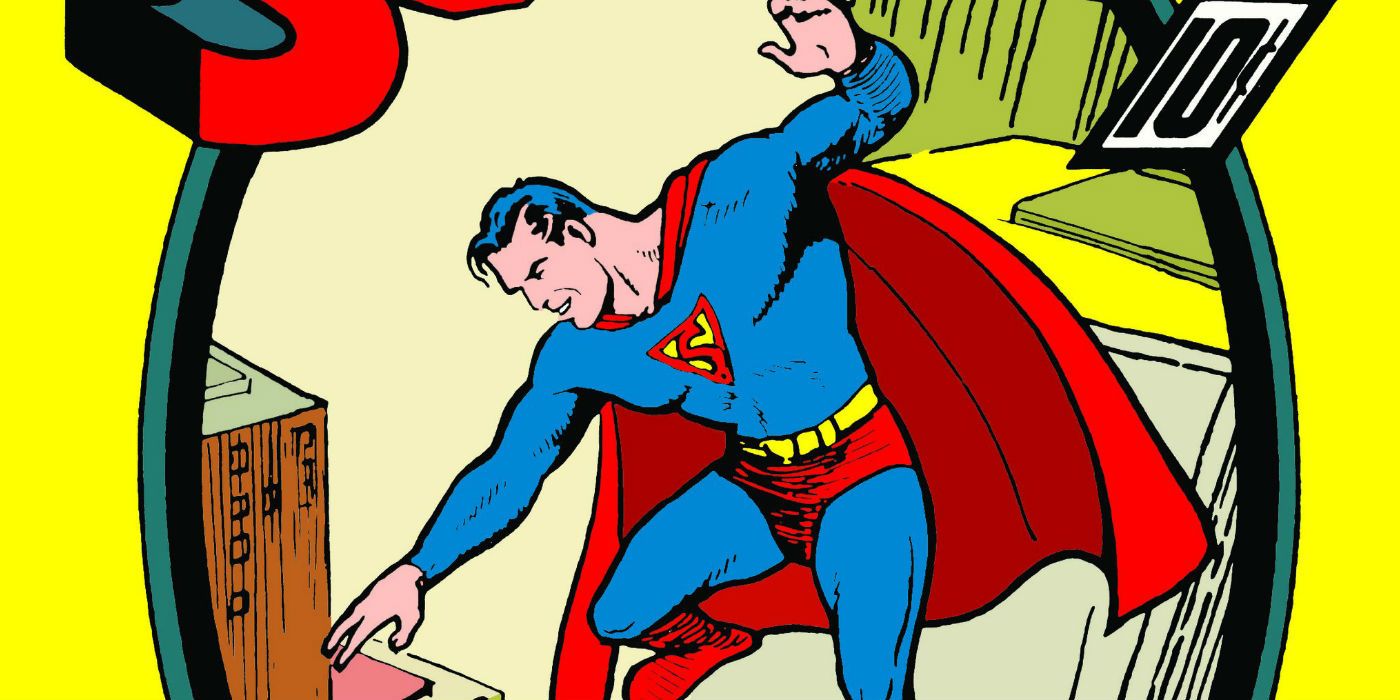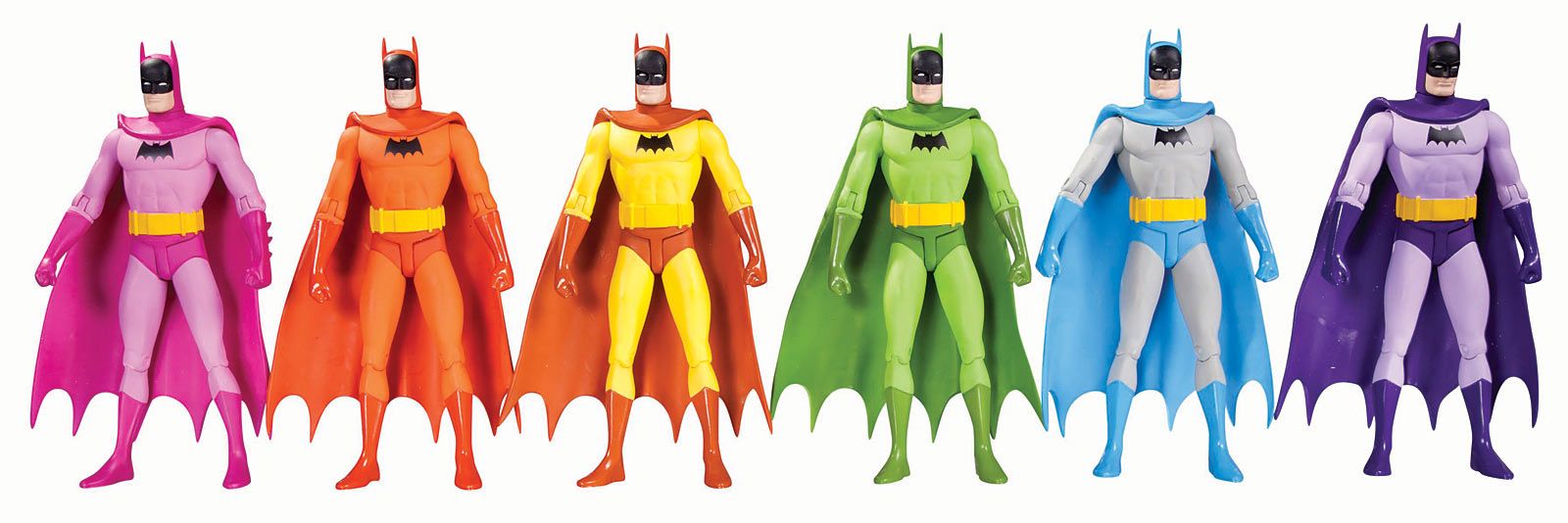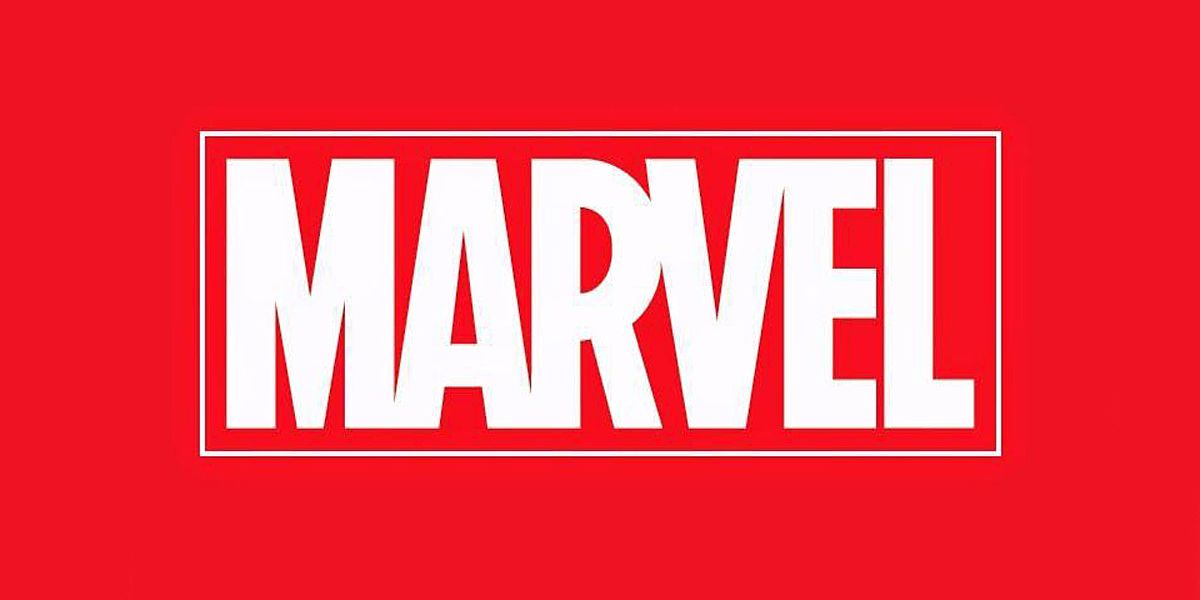the comics industry is dying. more accurately, it's always been in the process of dying and recovering. sometimes the deaths are more or less dramatic, sometimes the recoveries are more or less successful, but there's always been some sort of crisis in the comics industry. major players have risen and fallen, and after 83 years in business, dc comics has outlived most of its competition in the marketplace. but don't mistake a history of success with a lack of crisis. the truth is quite the contrary. some of the biggest controversies in the history of the comic book business have involved dc's books, creatives and business practices.
related: 15 controversial kids cartoons that got way too adult
these 15 instances of controversy have had negative impacts on dc as a company. these impacts range from angry fans to hurt creators to sales catastrophes. dc has failed repeatedly, and it's a miracle worthy of superman himself that it's managed to keep going for so long despite dealing with failures the likes of which could have killed a less resilient company. inevitably, there will be more controversies like these in dc's future, and it'll most likely find a way to recover from those catastrophes as well. that's the nature of the comics business.
15 the new 52 falls apart
the "new 52" relaunch of the dc universe in 2011 was meant to make the comics more accessible to new readers. just four years later, this reboot was abandoned. the new 52 contained some good books (scott snyder and greg capullo's batman and brian azzarello & cliff chiang's wonder woman were notably successful), but as an attempt to attract new fans, it was a failure.
the rebooted continuity, with some old stories staying canon while others were changed, was confusing for the uninitiated and often frustrating for the hardcore reader. most of the best stories could have been told just as easily without the reboot. the overall tone got excessively dark and gritty. sales increases were minimal given the degree of hype. the 2015 "dc you" rebranding attempted to bring more tonal and character diversity, while 2016's larger scale "dc rebirth" relaunch brought back more of a classic dc flavor.
14 ruining starfire
the most vocally loathed of the new 52 launch titles was easily red hood and the outlaws. there were many criticisms of the series, but the biggest ones centered around the treatment of starfire. while starfire was always drawn somewhat fanservice-y in older comics, she was still a strong character. not so much in red hood and the outlaws, where she's essentially treated as an object.
while other dc titles have been criticized for sexism, red hood and the outlaws' content was especially egregious given the popularity of starfire with younger fans thanks to the teen titans cartoon. jim shooter called the comic... well, he said it wasn't age appropriate we'll say that. aware of the negative reception, dc gave starfire a more positive, less sexualized solo series as part of dc you.
13 overemphasizing the killing joke
the killing joke remains one of dc's most acclaimed stories and best selling graphic novels, and not without some good reason. it's an interesting one-off experiment by alan moore exploring the psychology of the joker with some amazing artwork by brian bolland. but not everything about it has aged well, and in recent years there's been a backlash to how much dc focuses on this story.
the story's treatment of barbara gordon, crippling her just to traumatize her father, was criticized by many, including moore himself. barbara's comics presence since (first retired, then as oracle, then in the new 52 as batgirl again) has been in reaction to the killing joke. a variant cover of batgirl #41, referencing the killing joke, was seen as extremely inappropriate for a younger-skewing series and withdrawn. a maligned animated movie only increased the growing distaste for this controversial story.
12 making more watchmen
alan moore's deal with dc allowed him to recover rights to the watchmen characters when the series went out of print. unluckily for him, watchmen never went out of print, and dc and warner bros. are free to do whatever they want with the characters, much to his frustration. the zack snyder movie adaptation was controversial enough, but making new watchmen prequel comics without moore's blessing really got the fans upset.
before watchmen ultimately came and went with little fanfare beyond the initial anger, but that wasn't the end of dc using these characters. dc rebirth introduced the watchmen characters into the mainline dc continuity. the integration of watchmen and the main dc universe is still an ongoing story, but in spite of initial anger the fan reactions so far have been surprisingly positive due to the way the writers seem to be making a commentary on watchmen's own influence.
11 frank miller's batman jumps the shark
the dark knight returns and batman: year one are still some of the best batman stories ever. knowing this, it makes sense why dc would want frank miller to continue writing batman. unfortunately, frank miller in the '00s was not the same writer he was in the '80s. he was once one of the industry's golden boys, but the dark knight strikes again universally disappointed, failing to live up to its predecessor's literary and artistic quality.
one bad bat-story might be a fluke, but miller's next bat-story, all-star batman and robin, was so derided, it single-handedly killed dc's "all-star" line for some time, quite a feat considering the other published series, grant morrison's all-star superman, was a huge success. dc smartly rejected miller's "batman vs. al qaeda" pitch, which turned into the abominable holy terror. while miller came back for dark knight iii, dc paired him with brian azzarello to avert another disaster.
10 jesus christ meets swamp thing
when alan moore took over swamp thing in 1984, the series began publishing without approval from the comics code authority. this started the "mature readers" subsection of the dc comics universe that would later turn into its vertigo imprint. but just because this was a "mature readers" series didn't mean everything was allowed by the dc editors.
rick veitch, moore's successor on the book, was planning to feature jesus christ as a character in swamp thing #88. the script was approved and the art was almost complete when suddenly the issue was deemed unpublishable. veitch quit in protest, just three issues before his run was scheduled to end. neil gaiman and jamie delano, the writers originally asked to take over the book, declined in respect for the protest. veitch would end up at dc again years later, writing the question and aquaman.
9 identity crisis
event storylines almost always bring about some sort of controversy or another, but 2004's identity crsis stands out as one that was in particularly poor taste. it sold well, but angered many readers. the series began with the murder of sue dibny, elongated man's wife. if that wasn't a bad enough note to open on, in a flashback sequence, it's revealed she was raped by dr. light.
there's a lot that's going on here which upset people. there's the destruction of the most stable, long-term married couple in comics. there's the discomfort of silly silver age characters forced into such a grimdark scenario. most significantly, it's a particularly horrific example of what gail simone termed the "women in refrigerators" trope, in which female characters in comics get killed, raped or otherwise tortured purely as a plot device to further male characters' stories.
8 cmx manga
in the 2000s, manga was booming in the west, and dc wanted in on the action. dark horse had found huge success with manga titles, so it wasn't impossible for a western comics publisher to sell to manga fans. dc was not so adept with its cmx manga line. its big mistake: not realizing that manga fans really don't like it when their favorite comics get censored.
cmx became infamous for the butchered release of tenjho tenge. thirty-two edits, mostly regarding nudity and revealing outfits, were counted in the first volume. the edits lightened up in later volumes but still continued (viz would republish it uncensored). fans boycotted cmx over this, and the brand's eclectic line-up lacked other popular titles. cmx folded in 2010. while a number of manga publishers folded around the same time, including the once-successful tokyopop, cmx never reached the highs of its competition.
7 sudden firings (and rehirings)
comics, being mostly a freelance industry, isn't exactly the place to turn for stable long-term employment, but dc has developed a particular reputation as a difficult employer. nick spencer got fired from writing supergirl before his first issue even hit stands. art balthazar and franco weren't even informed that their book superman family adventures got canceled. the firing of gail simone from batgirl caused such a stir among fans that she ended up rehired!
other creators like chris roberson, the writer of izombie, have left dc in protest of how their peers were treated. even full-time employees have been experiencing difficulty as the company's undergone intense restructuring in recent years. almost a third of all the company's staff were laid off or relocated in 2010, while more left the company in 2014 when dc relocated its headquarters from new york city to burbank, california.
6 depowering wonder woman
for such a beloved character, dc has often not known what to do with wonder woman. maybe it's because the original stories that made her famous were such a product of their time (wwii) and creator (eccentric psychologist william moulton marston). maybe it's because her mythology's so complicated. or maybe it's because a male-dominated company has lacked the confidence or the skill to handle a powerful female character.
the misfire of wonder woman #178 from 1968, in which wonder woman surrendered her powers to stay in man's world, was a case of men misreading just what women liked about the character. mike sekowsky intended to make wonder woman a more relatable character who could serve as a realistic role model for young girls. he also completely missed the point of why wonder woman's such a powerful icon. gloria steinem argued that depowering wonder woman, whatever the motivation, was anti-feminist.
5 "the dc explosion" implodes
one thing that both marvel and dc have struggled with is translating the booming popularity of their movie adaptations into increased sales for their comics. the grandest failure of this kind was one of the first: "the dc explosion" of 1978. both to hype up superman: the movie and to compete with marvel, editorial director jenette kahn increased the number of series being published as well as the number of pages per issue.
this "explosion" lasted three months before what's now informally referred to as "the dc implosion." twenty series were cancelled abruptly, while an additional 11 were given formal endings the same year. numerous factors were blamed for the failure: marvel's dominance, distribution problems due to blizzards, increased printing costs. the two limited-run cancelled comic cavalcade collections of series canceled in the implosion are now some of the most valuable comic collector's items, worth $3,680 together.
4 the '90s
superman died, got replaced by four other superheroes and came back to life sporting a mullet. bane broke bruce wayne's spine while the psychotic azrael took over the batman mantle. hal jordan killed his fellow green lanterns and became the villain parallax. the '90s "dark age" was a weird time for comics across the board, but dc's big event comics in particular contributed to that era's boom and bust.
the death of superman, batman: knightfall and emerald twilight were all huge sellers upon first release, but the success they brought dc was short-lived and unsustainable. readers got worn out on excess darkness and twists that would inevitably be reversed and undone. the sense of event fatigue that continues in comics to this day began to take its toll on dc in the '90s.
3 screwing over superman and batman creators
superman made dc comics wealthy. superman's creators, jerry siegel and joe shuster, never saw that wealth. when their 10 year contract with dc expired, they hoped to take the rights to superman with them, but the courts ruled that dc owned the character. siegel technically owned the rights to superboy, but dc purchased those as well and subsequently removed siegel and shuster's creator credits. lawsuits continued over the years. eventually, in 1976, warner communications agreed to pay them royalties and restored their credit.
bob kane, the credited creator of batman, did better for himself. however, his success involved screwing over batman's co-creator bill finger. kane's contract gave him the sole creator byline. while kane came up with the name and illustrated the comics, finger came up with the costume, the secret identity, the detective aspect, most of the villains and supporting characters. finger deserved more credit than he got.
2 holy homophobic criticism, batman!
did you know that "only someone ignorant of the fundamentals of psychiatry and of the psychopathology of sex can fail to realize a subtle atmosphere of homoeroticism which pervades the adventures of the mature 'batman' and his young friend robin"? psychologist frederick wertham wanted you to know in his infamous anti-comic screed seduction of the innocent. he also thought superman was fascist and wonder woman was pursuing a lesbian sadomasochist agenda (ok, that last one's actually sort of true, but wetham thought that was a bad thing).
wertham's writing in the '50s contributed to both the "lavender scare" anti-homosexual witch hunts and the growing social panic that comic books were creating a generation of juvenile delinquents. faced with the threat of government censorship, the comics code authority was put in place as a self-censorship tactic by the industry, effectively ending the golden age of comics.
1 almost sold to marvel
in 1984, the most infamous rivalry in the history of the comics medium almost came to a definitive conclusion. having been second place in sales since the early '70s, dc's parent company warner communications entered serious talks to try to sell dc comics and all of its characters to marvel, at the time the number one comics company in the world. the only reason this deal didn't go through? marvel's publisher jim galton thought the dc characters weren't good enough to be worth the purchase. now that's a low blow.
of course, things ended up working out for dc in the end. the publisher refreshed its universe the next year with crisis on infinite earths and put out a number of blockbuster titles in the late '80s. by the '90s, dc had pulled ahead of marvel in sales, while marvel was falling into bankruptcy. the fortunes of the two competitors have gone back and forth, but it's crazy to think this all could have ended in 1984.
do you know of any other times that dc almost imploded? let us know in the comments!

